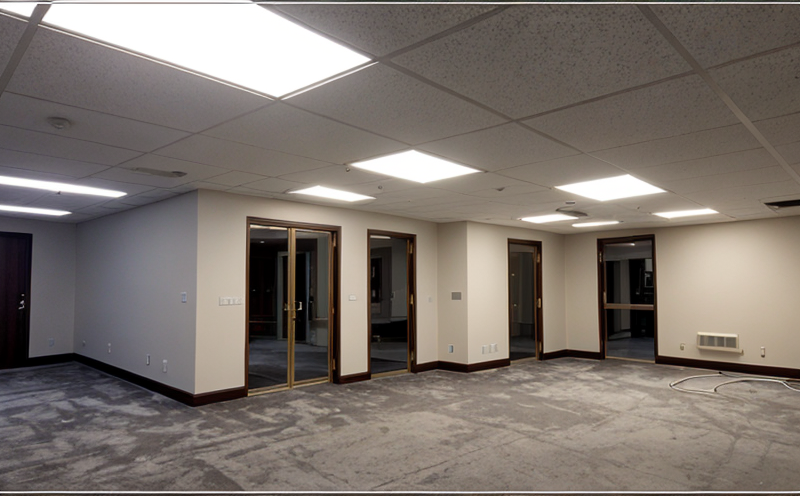IEC 60695 Fire Hazard Testing of Architectural Lighting Fixtures
The International Electrotechnical Commission (IEC) standard IEC 60695 provides a comprehensive framework for assessing the fire hazard properties of materials used in electrical products. One such application is the testing of architectural and decorative lighting fixtures, ensuring they meet stringent safety requirements to prevent fires and protect public safety.
The process involves evaluating various aspects that could contribute to the ignition or propagation of flames. This includes understanding the material composition, heat release rate, smoke production, and other parameters critical to fire safety. For architectural and decorative lighting, this testing is essential as these fixtures are often placed in high-traffic areas where even minor sparks can lead to catastrophic incidents.
The first step in IEC 60695 testing involves the selection of appropriate test specimens that accurately represent the product under real-world conditions. This preparation ensures that the results obtained during testing are reliable and applicable to the actual use environment. The chosen materials must be representative of those used in the construction or decoration of fixtures, including plastics, metals, and any other components.
The apparatus used for these tests includes specialized equipment designed to simulate various fire scenarios. These setups allow for controlled exposure of the specimen to flame sources, such as open flames or smoldering materials. The apparatus also measures critical parameters like heat release rate (HRR) and smoke density over time.
After exposing the specimens to the defined fire conditions, detailed observations are made regarding their behavior under these circumstances. These evaluations focus on aspects such as flame spread, melt formation, and overall stability of the fixture during and after exposure. The results from these tests provide valuable insights into potential risks associated with specific products.
Based on the outcomes of the IEC 60695 fire hazard testing, manufacturers can make informed decisions about design modifications or material changes aimed at enhancing product safety. Compliance with this standard not only protects end users but also ensures adherence to regulatory requirements across different markets worldwide.
The importance of rigorous testing cannot be overstated when it comes to ensuring the integrity and security of architectural and decorative lighting fixtures. By adhering to international standards like IEC 60695, companies can demonstrate their commitment to producing high-quality products that meet global safety expectations.
Scope and Methodology
| Test Parameters | Description |
|---|---|
| Heat Release Rate (HRR) | The amount of heat released by the material during combustion. |
| Smoke Density | The optical density of smoke produced when materials burn. |
| Melting Behavior | The extent to which materials soften or melt upon exposure to fire. |
| Flame Spread Index (FSI) | A measure indicating how quickly flames spread across the surface of a material. |
The scope of IEC 60695 testing encompasses several key areas relevant to architectural and decorative lighting fixtures. It covers evaluation methods for determining the flammability, heat release properties, smoke production characteristics, as well as melting behavior under specified fire conditions.
During each test run, precise measurements are taken using dedicated instruments calibrated according to ISO 13946 guidelines. These devices ensure accurate recording of all relevant data points necessary for interpretation and comparison against established benchmarks.
Quality and Reliability Assurance
The quality assurance process associated with IEC 60695 testing ensures that every aspect of the evaluation adheres strictly to predefined standards. This includes thorough inspection both before and after conducting tests, ensuring all equipment is functioning correctly and specimens are prepared accurately.
Reliable reporting plays a crucial role in maintaining transparency throughout this process. Detailed reports outline each stage of testing, highlighting key findings along with recommendations for improvement where applicable. Such documentation serves not only as evidence of compliance but also as valuable resources for future product development efforts.
Environmental and Sustainability Contributions
- Emission Reduction: By minimizing harmful emissions during manufacturing processes, IEC 60695 helps reduce environmental impact.
- Innovation Driving Cleaner Technologies: Encourages innovation towards more sustainable lighting solutions through rigorous testing practices.
- Consumer Confidence: Ensures that consumers trust products meeting stringent safety standards, fostering greater market confidence overall.
The implementation of IEC 60695 fire hazard testing contributes positively to environmental conservation efforts by promoting cleaner technologies within the industry. Through reduced emissions and encouragement of sustainable practices, this standard supports broader goals related to ecological balance and resource management.





